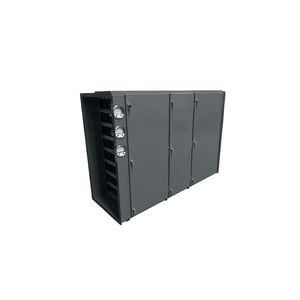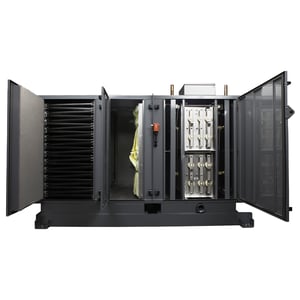Following Camfil’s acquisition of Airepure Australia in March 2020, we are pleased to announce the consolidation of our Australian businesses. Effective 1 May 2021, Airepure Australia ceased trading, and commenced operating as Camfil Australia Pty Ltd.
Camfil Australia offers an extensive range of products and technical services supporting a wide range of industry applications. To view Camfil Australia’s range of products visit our product page or download our product overview below.
Can’t find what you are looking for? Customers familiar with Airepure’s range of products, can rest assured they will have ongoing access to the following standard and custom products:
- Locally manufactured metal framed flat panel and v-form prefilters, including our Pure-V (available in 45mm and 95mm depths)
- Our legacy range of deep bed extended surface bag filters for HVAC applications
- Terminal HEPA supply housing systems, including our CS HEPA module
- Terminal HEPA containment systems and exhaust housings
- Custom in-line HEPA containment systems and exhaust housings
- 250 micron SS mesh insect screens and return air assemblies with pre-filtration
- Laminar air downflow units, cabinets, booths and ceilings
- Pass through hatches and cabinets
- Single and double door air showers
- Laminar downflow and hybrid laminar downflow ventilation systems
- FOCUS™ Ultra Clean Ventilation (UCV) and directional airflow systems
- Laminar downflow and hybrid laminar downflow ventilation systems
- Custom gaseous filtration systems and side access housings
- Mobile odour control units (trailer size through to container size)
- Self-contained air scrubbing, corrosive air and positive pressure units for controlled environments
- Custom drum and deep bed air scrubbers for the effective removal of highly corrosive or toxic gas and odours
- Emergency gas scrubbers for the control of catastrophic gas releases
- Large scale, certified FRP and stainless-steel containment systems for carbon and emergency applications
- Specialty chemical / biological odour control systems
- Integrated scrubbers and control systems including electronics and fluid controls
- Specialty chemical odour control units and large scale chemical control systems
For more information about these products, please complete our contact us form and your local representative will contact you.
We are proud to announce the following products that were previously available from Airepure have been added to Camfil Australia’s extensive product offering. More products will be added soon.
Camfil Australia offers NATA accredited testing and certification services and HEPA filter supply and replacement for all types of contamination-controlled environments. These include hospital cleanrooms, pharmaceutical cleanrooms, manufacturing cleanrooms, biological safety cabinets, fume cabinets/cupboards, cytotoxic drug safety cabinets, clean work stations, pharmaceutical isolators, laminar air flow systems and airborne containment systems. To find out more, visit our filter testing and certification page.
The Camfil Australia team is experienced in supplying specialty and custom engineered solutions for a wide range of industries. No matter the size or complexity of your air filtration needs, we can provide sound advice and recommend appropriate solutions to meet your requirements and budget. To find out more, visit our local engineered solutions page.
Camfil Australia now has locations in Sydney, Melbourne, Brisbane, Adelaide, Perth, Canberra and The Gold Coast. To find your nearest branch, visit our contact locator page or complete our contact us form and your local representative will contact you.
Australia




